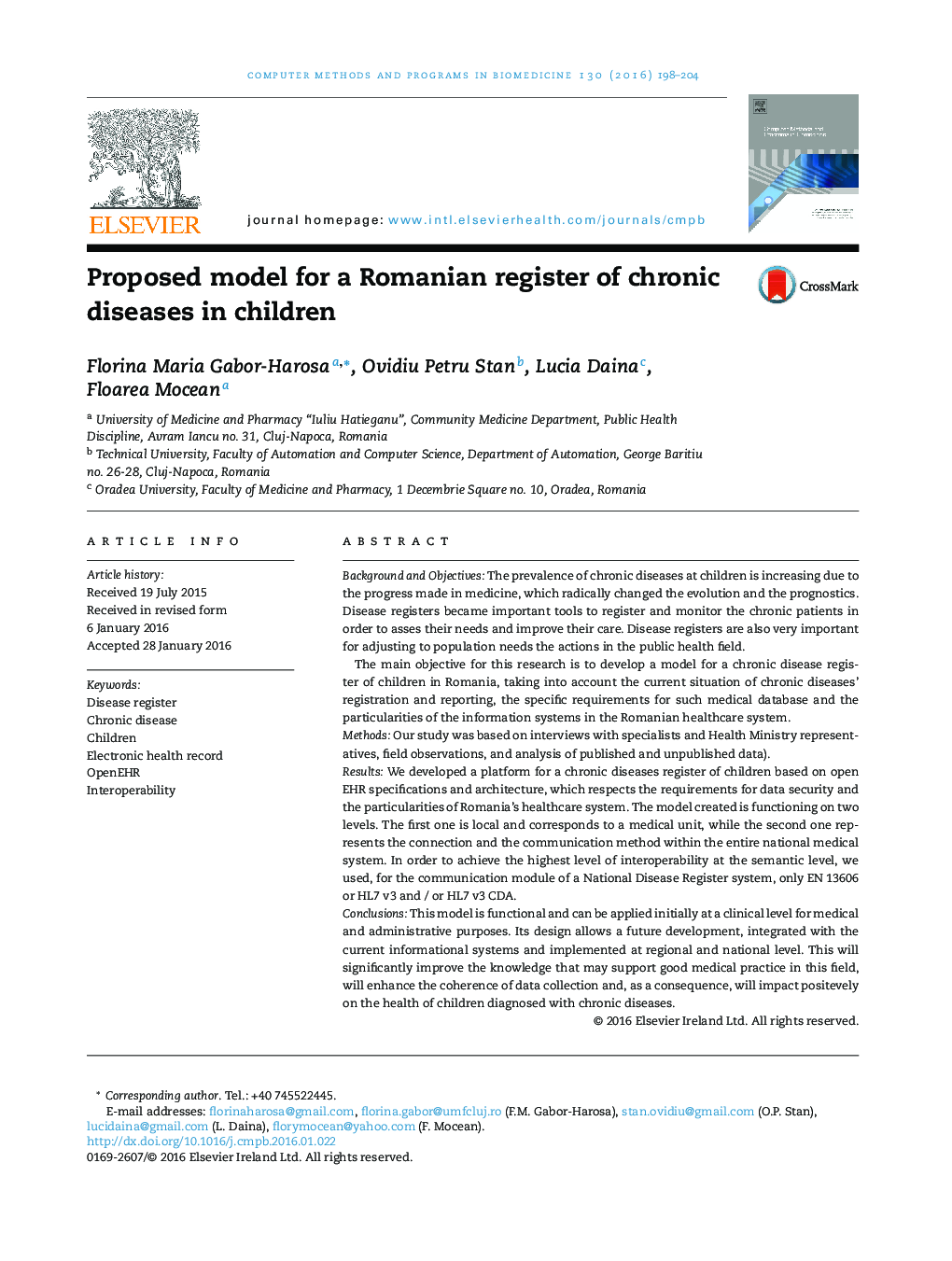| Article ID | Journal | Published Year | Pages | File Type |
|---|---|---|---|---|
| 468648 | Computer Methods and Programs in Biomedicine | 2016 | 7 Pages |
•Romania does not have a population-based disease register for chronic diseases in children.•This study developed the first model for a chronic disease register of children in Romania.•The proposed model for a chronic disease register in children is designed according to the needs and particularities of the Romanian healthcare system.•The proposed solution is aim to work at two levels (local and national) and can be integrated in the existing informational systems.
Background and ObjectivesThe prevalence of chronic diseases at children is increasing due to the progress made in medicine, which radically changed the evolution and the prognostics. Disease registers became important tools to register and monitor the chronic patients in order to asses their needs and improve their care. Disease registers are also very important for adjusting to population needs the actions in the public health field.The main objective for this research is to develop a model for a chronic disease register of children in Romania, taking into account the current situation of chronic diseases’ registration and reporting, the specific requirements for such medical database and the particularities of the information systems in the Romanian healthcare system.MethodsOur study was based on interviews with specialists and Health Ministry representatives, field observations, and analysis of published and unpublished data).ResultsWe developed a platform for a chronic diseases register of children based on open EHR specifications and architecture, which respects the requirements for data security and the particularities of Romania's healthcare system. The model created is functioning on two levels. The first one is local and corresponds to a medical unit, while the second one represents the connection and the communication method within the entire national medical system. In order to achieve the highest level of interoperability at the semantic level, we used, for the communication module of a National Disease Register system, only EN 13606 or HL7 v3 and / or HL7 v3 CDA.ConclusionsThis model is functional and can be applied initially at a clinical level for medical and administrative purposes. Its design allows a future development, integrated with the current informational systems and implemented at regional and national level. This will significantly improve the knowledge that may support good medical practice in this field, will enhance the coherence of data collection and, as a consequence, will impact positevely on the health of children diagnosed with chronic diseases.
